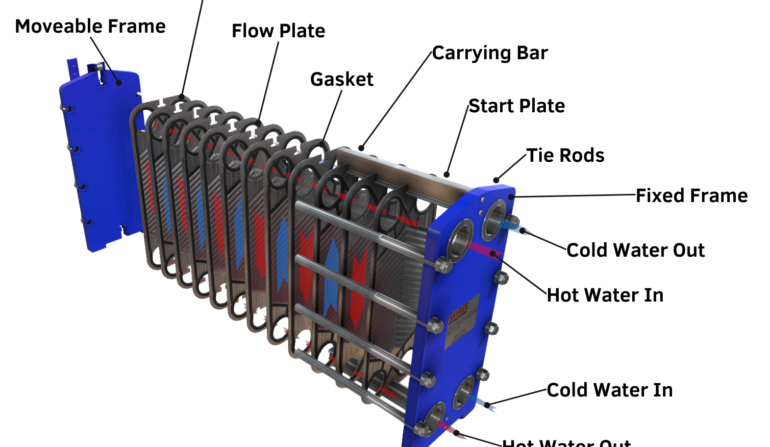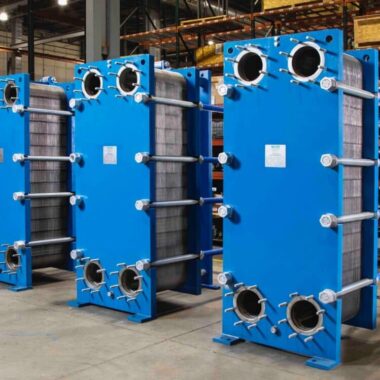Plate Heat Exchanger
Plate Heat Exchanger is a type of heat exchanger that uses metal plates to transfer heat between two fluids. This has a major advantage over a conventional heat exchanger in that the fluids are exposed to a much larger surface area because the fluids are spread out over the plates.
In the PHE the plates create a frame where the plates are pressed with headers and tie bars, and the seal is guaranteed by gaskets. Gaskets, in addition to their sealing effect, serve to direct the flow of the fluids, and are placed along the grooves at the edges of the plates.
The PHE device operates based on thermodynamic principles. Each plate in the exchanger features a dedicated concave tubular shell. The plates are arranged to form narrow, rectangular channels, allowing heat transfer through these segmented sections. The operating fluid moves through these intricate, narrow channels. Gaskets encircle the plates to regulate fluid flow. These gaskets are positioned to ensure that one type of liquid (such as a canvas being heated) flows on one plate, while a different fluid (like hot water) flows on the adjacent plate. The diagram below illustrates two adjacent plates
Application of Plate Heat Exchanger
- Heat Pump Isolation
- Mash Coolers
- Glycol Coolers
- Cooling Tower Isolation
- Lube Oil Coolers
- Batch Heating and Cooling
- Free Cooling
- Heat Recovery Interchangers
- Process Heating and Cooling
- Water Heaters
- Waste and Recovery
Advantages of Plate Heat Exchangers
- The plate heat exchanger’s design is more user-friendly.
- These types of heat exchangers have a larger heat transfer rate than shell and tube heat exchangers.
- The exchanger does not need extra space for disassembly.
- They have simple maintenance and cleaning.
- Plate heat exchangers are smaller than shell and tube heat exchangers.
- They have a small fouling factor.
- Easy to repair and wash.
- These exchangers have low installation costs.




